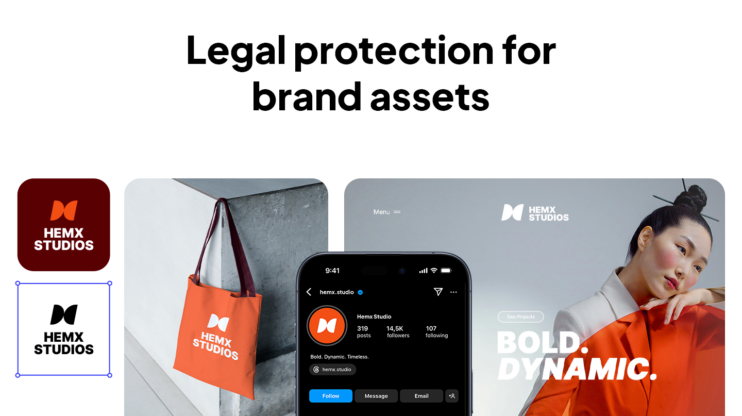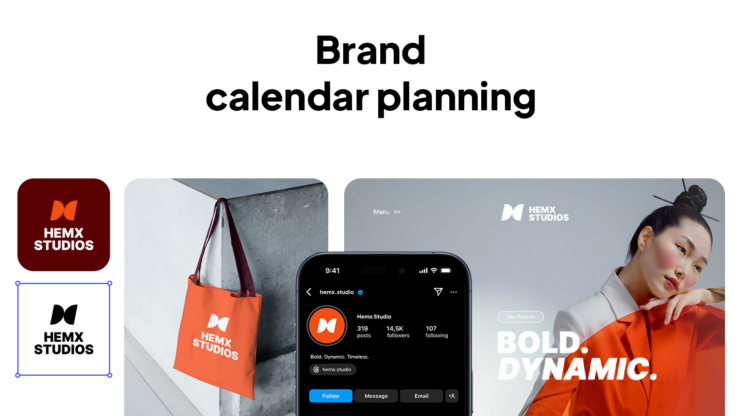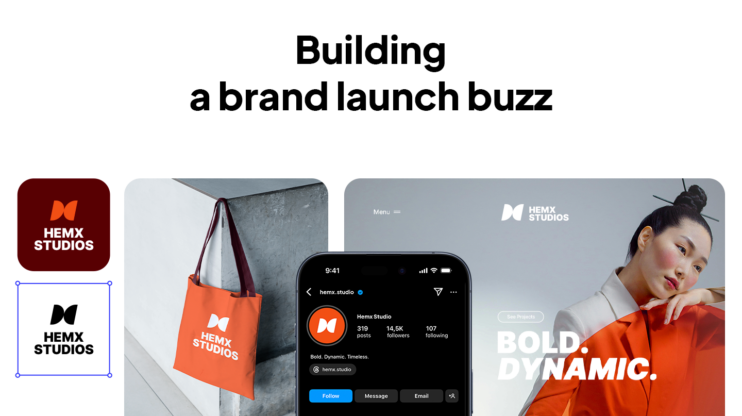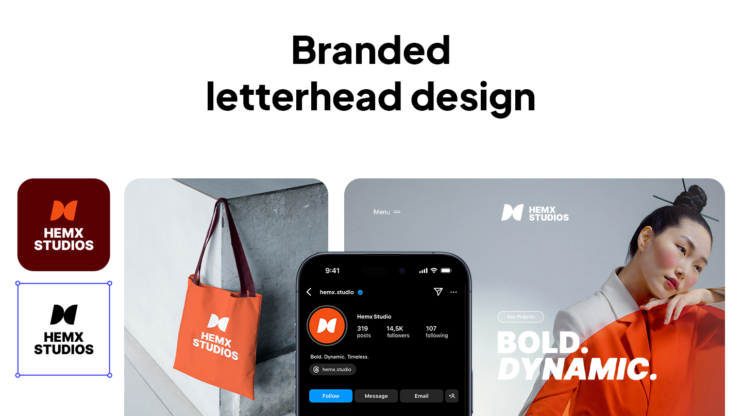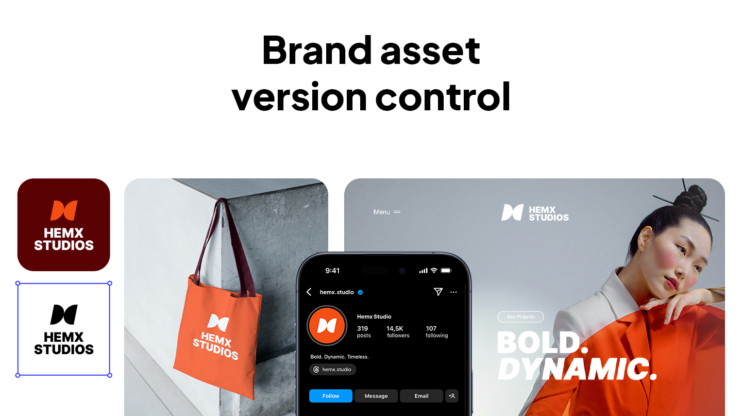Before publicly launching your brand you should define your brand, secure assets, build messaging, create a website, build a brand launch buzz, and plan your launch. Most brand launches fail because no one knows about the brand to begin with.
Your first step should be to create a pre-launch strategy that will give you clarity, confidence, and momentum. This will help you validate your ideas, build anticipation, and connect with your audience before the day of your launch.
According to G2, 95% of launches fail because of inadequate preparation. That’s why every step of your launch strategy matters. I’ve done some research, talked to the 10Web teams responsible for and critical to every launch we have, and have come up with a list of the most important pre-launch steps you should take for a successful launch and post-launch tracking.
What are the essential steps you need to take before launching your brand publicly?
Before a launch you need to have:
- A clear definition of your brand (purpose and positioning)
- Clear messaging (the value you offer)
- A pre-launch buzz (create awareness around your brand)
The above three are an absolute must. Below is a more detailed table of the essentials before a brand launch.
| Step | Why it’s important |
| Clarify Brand Foundations | Without clarity, your messaging and design fall flat |
| Visual Identity | Even simple visuals build recognition and trust |
| Brand Messaging | Clear value prop and tagline help convert interest |
| Domain + Handles | Visibility + credibility before launch |
| Launch-Ready Website | Doesn’t need to be fancy—just clear, responsive, and helpful |
| Launch Preparation | Even minimal marketing is better than silence |
| Launch and Track | Measure what matters to learn and grow |
Launching a brand is a huge task and involves many multi-layered and multi-structured steps. However, there are some steps that are the “salt and pepper” on your steak. In other words, essential to your launch and its success. Before you go public, take a look at this list and see what you can take from it.
1. Find the heart of your brand
Before logos, websites, or launch parties, you need to deeply understand all aspects of your brand. Be very clear about what your brand stands for. This is where you start to connect with your audience and the people whose pain points you want to solve and eventually will solve. To brainstorm and help you come up with the answers, I’ve extracted some questions that you can ask yourself, along with steps you can take to find your answers.
What’s the “why” behind your brand?
Besides making money, what are the reasons your brand exists? What are some market gaps in existing products/services that you want to fill, or changes that you want to create?
Tip: To understand your brand purpose, ask yourself: What problem am I solving, and can it be validated?
How to find your target audience?
If your product disappeared tomorrow, who would feel it the most? That’s your audience.
You can guess who your audience is, or you can simply ask. Talk to real people, listen to their day-to-day habits and frustrations. Then, test your idea, and find out if your solution actually solves their problem. This will serve you both in the short and long run.
“Focus on the people who will see the biggest shift by using your product. When we were launching 10Web’s API, the potential audience was anyone building websites at scale. But the group that benefited the most turned out to be hosting providers and domain registrars,” says Ellen.
Tip: Before you find your target audience, you need to have a clear idea of what product/service you want to offer.
Here are the steps you can use to identify and find your potential target audience:
- Make educated guesses about your target audience.
- Target audience demographics
- What industry they are in
- What kind of lifestyle they have
- What are their values
- What kind of behaviors do they have
- Find where your target audience hangs out (online or offline) and find answers to these questions:
- What are they asking?
- What frustrates them?
- What solutions do they already use or complain about?
- Talk to your target audience. (most powerful step, don’t miss)
- Talk to 10 people who may be your target audience
- Ask them questions about the current solutions they are using
- Record the common pattern
- Use tools to validate your research with data.
- Google Analytics (if you have a site)
- Meta Ads / TikTok Ads audience insights
- SparkToro (shows where your audience hangs out)
- Ubersuggest or Ahrefs (to see what they search)
- Create a clear target audience persona.
- Name/Label: e.g., “Busy Working Moms” or “Freelance Designers”
- Demographics
- Psychographics: beliefs, goals, fears
- Behaviors: what they buy, how they decide, where they hang out
- Pain Points + Desires
Understanding and finding your potential target audience will directly affect how you approach the rest of your branding and brand launch.
How to write an authentic brand mission and vision statement?
Start with your story. What inspired you to create this particular brand? Your target audience will play a key role here. End with where you see your brand in 10 years. To help you with your mission and vision, you can use tools like the 10Web vision statement generator.
Tip: Write like you are speaking with and explaining it to your friend.
How should you position your brand?
Brand positioning will play a crucial role in shaping the rest of your brand identity. Here is where you show your audience how you are different from every other brand out there. You have to really own this value that you offer and the others don’t.
2. Develop your visual identity
Your brand’s visual identity should reflect who you are. It’s one of the main ways people will recognize and remember you. Think of the Google font or Google’s primary colors. Your brand’s visual assets should build recognition, trust, and reflect your brand personality.
What are the core elements of visual identity?
- Logo – Your main visual symbol or wordmark
- Color palette – The consistent colors you use across all platforms
- Typography – The fonts you use in headlines, body text, etc.
- Imagery style – The look and feel of your photos, illustrations, graphics
- Iconography – Any icons or symbols used in your brand materials
- Layouts – How elements are arranged in your designs (social posts, website, print)
- Design guidelines – A rulebook that ensures visual consistency everywhere
Should you use a logo maker or hire a designer?
If you are just starting out and need to build something fast, a logo maker is a great solution. For example, the 10Web logo maker will generate a unique logo just by taking your business name or a quick description. Some tools, like 10Web’s Logo Maker, also offer an entire brand kit ready with a color pallet and typography.
“With a designer, the human touch and personality of the designer come through in the design. Also, customization is limitless. But, finding a designer can take a lot of time and designers can be expensive. Logo makers are a great alternative for businesses that don’t have time or a budget to design their logo,” says Tatev Soghomonyan, Graphic Design team lead at 10Web.
If your business is in its more mature stages and you need to have really carefully chosen nuances that will reflect your brand in a deeper way, then investing in a designer is probably a better choice.
What story should my visual identity tell?
Your visual identity should tell about the world and the lives lived by your audience. It should tell the story of how it is a solution to their issues. If it does this, it will then reflect your brand purpose, brand values, and brand character.

Go from idea to brand in minutes.
Describe your brand and get complete brand assets.
3. Build Your Brand Messaging
Before your audience trusts your product, they need to get your message. Clear, consistent messaging is the heart of any strong pre-launch strategy—it’s what turns first impressions into lasting connections. Also, you want your messaging to be filtered enough to reach your target audience and skip the audience that doesn’t fit. Here is an insight shared by our Growth PM, Ellen about brand messaging.
“When we worked on messaging for 10Web’s B2B API, we kept it simple. ‘We help you sell outcomes, not infrastructure—live, editable WordPress sites in minutes, at scale.’ Our messaging spoke directly to our ideal customers, people who are focused on monetization, and it filtered out the wrong fit, those looking for a DIY website tool.”
Your brand should have a tagline, a tone of voice, and a brand story.
- A tagline is a short statement or phrase that captures the essence of your brand, adds recognition, and acts as an instant hook. Think of Nike’s “Just Do It.” Your tagline should always be clear, speak directly to your audience, and reinforce your brand essence.
- Tone of voice is how your brand speaks. It is the personality and emotions of your brand. Your brand’s tone of voice shapes how people see your brand, emotionally connects to your target audience, and ensures consistency across all platforms.
- The brand story is the story behind how your brand was created, why it was created, and what’s its purpose. Your brand story makes your brand human, unique from other competitors, and welcomes people to join your mission.
What are messaging pillars?
Messaging pillars are the messages you want people to associate with your brand. To keep everything clean and clear, you should have no more than 3-5 consistent messaging themes. These should all reflect the core of your brand story, what you offer, and why it matters.
For example, one of 10Web’s messaging pillars is “One AI platform to build, host and scale your website.”
Let’s break this down:
- 10Web is a forerunner in AI website building
- 10Web is an all in one hosting platform
- 10Web offers scalable infrastructure
All of these points are in the pillar messaging and are at the core of 10Web.
How can I build an emotional connection with my audience?
The About section of your website is one of the best spaces to connect with your audience. This is the space to show the human behind the product/company. Here you can write about your why, your journey, and what your brand cares about.
How do I write a tagline that sticks?
To write a tagline that sticks:
- Start with your core promise. What benefit are you offering your audience? What issue are you solving for them? What pain point are you addressing?
- Take all of the above and condense it into a few words that are clear and punchy.
- Use emotion. Why does it matter?
- Make sure to be aligned with your brand’s tone so that you can sound like you.
- Say it out loud. If you feel like it’s being forced out and not rolling off your tongue, then it’s no good.
Tip: If you are experiencing writer’s block you can use tools like the 10Web Slogan Generator to give you that extra push.
How can I find my brand voice?
There is a short and very helpful exercise that I love doing for finding the tone of voice I want to use in my writing. This is also perfect for a brand voice. It goes like this: If your brand were a person, how would they speak? Then write down five adjectives, like friendly, bold, honest, helpful, or quirky. That’s it, you’ve got the starting point of your brand voice.
For example, my brand would be a mix of adjectives. Maybe a couple of adjectives like bold and quirky. They would speak clearly, using bold statements that are unique in the way in which they describe themselves and their products. Thus, the quirkiness.
Here is a short example sentence that my brand may say. “We don’t think outside the box. We recycle it, paint it pink, and turn it into a rocket.” I suggest trying a few paragraphs using this method to see if your chosen adjectives truly fit your brand. If not, keep adjusting until they do.
4. Secure your digital real estate
One of the most important steps in your brand’s pre launch setup is owning all your essential brand assets such as your domain, hosting, branded email, and social handles.
What should I look for in a domain and hosting?
Bottom line, you should choose a domain that’s short, clear, and on brand, and hosting that’s fast, reliable, and secure. You can buy a domain from domain providers. Most hosting providers also sell domains. No matter which way you go, there are a few things you should look for when deciding on a domain name and hosting.
Domain name
- Keep your domain name short, clear, and easy to spell
- Make it memorable
- Use the right extension
- Check for availability in social platforms
- Check that it doesn’t belong to someone else
Hosting
- Choose a hosting provider that has no less than 99% uptime
- Hosting should scale and grow with your brand
- Ensure SSL, malware protection, and regular backups are included
- Good customer support
- User friendly and good integration
Tip: If you want a hosting provider that has everything in one place and provides a domain, top tier service, and world class hosting capabilities without expecting great technical knowhow from you, 10Web Managed WordPress Hosting is a great choice.
Do I need to set up an email with my domain name?
Having an email that has your brand name instead of @gmail.com is a signal that you are serious about your brand and your business. It’s also an important trust indicator for your target audience. Though you can probably manage without one, my suggestion is that you should set up an email with your domain name.
What are social media handles and how can I secure them?
Social media handles are your unique names on that platform. They act as your digital calling card. They are easy to search, tag, and share. For example, let’s say you sell fig jam, then you would want @figjam to be your handle. It’s similar to when someone wants to ping you on your texting app, they use the handle that corresponds to your name as registered with that app. If you’re wondering if you should take all handles, even ones that aren’t being used, the answer is yes. That way you can make sure no one else takes them.
What if my domain name is taken?
If your domain name is taken, you should go with a variation. The same rules apply to the variation. Make sure that it’s short, memorable, and not difficult to spell.
Tip: Having a clean domain, matching handles, and a pro email are the basic credibility signals that matter most at this stage.
5. Build a website
Your website is your brand’s home, personality, heart, and soul. This is where you get to tell your tribe about your product/service. This is where you get to tell them how you are solving their problems or how you want to serve them. It’s for this reason, that you should have a clearly structured, cleanly designed, responsive, and speed optimized website. In addition, there are pages that are a must on your website.
- Homepage: Your brand’s first impression. Use visuals that express your brand. Use slogans and headlines that state your brand values. Use calls to actions to engage your audience. Use testimonials to gain trust.
- About page: This is where your brand story lives. When and why did you start? What do you want to achieve? Who do you want to serve? Who are the founders?
- Contact page: This page should have all the ways a customer or a user can reach you. All links and phone numbers should be working, otherwise trust will be lost. Also your location(if applicable) and social media links should be here.
- A product/service page: This page should have all your products or services. Each should be clearly labeled, have a clear description, pricing, and how to get started. You can also have FAQs on this page.
The above listed are the non-negotiable pages for your brand website.
Should I use a no-code builder, WordPress, or hire a developer to build my website?
The tool or method you use to build your website largely depends on what you want and your resources. According to Gauss, 67.39% of business owners would rather use AI builders when creating their websites. If you want to launch a professional website quickly with minimal resources, then a no-code builder like the 10Web AI Website Builder is the best choice. It’s a text-to-code website generator, so all you need to do is tell the builder about your brand and have it generate and host a fully functional and editable WordPress site in minutes.
Using WordPress is a good way to go if you are proficient in coding languages. If you have resources, time, and your website is really complex, then hiring a developer to build your website is a better choice. Keep in mind that for the last two choices, you will need to purchase hosting separately.
6. Create content and build awareness
Pre-launch content helps to warm up your audience to your brand. It helps to attract early followers and create a pre launch buzz around your brand. The key is to start small but be consistent. People love seeing the process, being included in the journey, and being there when it finally comes full circle.
Start with blog posts, video teasers, short Reels or TikToks that deliver value and introduce your story. Throw in coming soon previews to get people excited. Build an email list and offer something in return, like early access, special discounts, or exclusive updates. This gives you a direct line to your audience when it’s time to launch.
What content builds trust?
Authentic, useful, and clear content builds trust. The more your content sounds like you and delivers what you talk about, the more trust you will build with your audience.
What content attracts interest before launch?
Tips, personal stories, teasers, sneak peeks, or even showing what you’re learning can pique interest before a launch. However, to avoid being salesy or overmarketing your brand, be sure to focus on telling your brand story rather than constant promotion. Share the journey, not just the offer.
I spoke to Armine Hayrapetyan, Senior Digital Marketing specialist at 10Web. I asked her how we approach our pre-launch content. “Our pre-launch strategy involves both a press release and social media channels. We usually present the market gap, our tool or product, and how we solve or fill this gap in our press release. As far as marketing, teasers, and sneak peaks, this we do on social media channels.”
Which communities should I engage?
Go where your audience already hangs out, Reddit, Discord, indie communities, Facebook groups, or niche forums.
7. Prepare for the launch
It’s go time! This pre launch critical checklist should keep you aligned with your brand launch. Check all of these off for a smooth launch.
Final hour checklist
- Make sure your website is live, secure, and mobile-friendly.
- Test all forms and checkout flows like email sign-ups, contact forms, and payment processes end-to-end.
- Check that your Homepage headline + CTAs are clear.
- Marketing channels should be ready to launch email, scheduled posts, and have partner promotions queued.
- Live chat, inbox monitoring, and quick responses should be ready for launch-day questions.
8. Launch and Track Performance
The launch is the beginning of your brand. The work and lessons that come after the launch and how you respond, change, and grow with them, will determine where your brand goes.
Important post-launch steps
- Make announcements via an email list, socials, and communities. Repeat the message over several days.
- Track key metrics by focusing on 1–2 KPIs that match your goals (e.g., sign-ups, sales, engagement).
- Use analytics tools like Google Analytics, Meta Insights, and/or Hotjar to track performance.
- Engage with your audience by replying to comments, answering questions, and keep the conversation going.
- Review customer behavior. See who’s buying, how they interact, and whether they stick around.
What KPIs define a successful launch?
KPIs depend on your launch goals. If you are launching a product, you might want to track pre-orders, sales revenue, or the cost of your customer acquisition. For a service or a community launch, you can measure email signups, active users, or engagement rate. If your main goal is to build awareness, you should look at website traffic, social reach, and brand mentions.
I asked Sona Mamyan, the head of our marketing team here at 10Web which KPIs define a successful launch for us. Her response was insightful and affirmed that different brands will have differently defined KPIs. “I would say cumulative reach of the launch. A product launch is usually an awareness campaign, so your KPIs should be aligned with awareness goals such as the cumulative number of brand mentions compared to your competitor launch benchmarks.”
6 Brand pre-launch mistakes
- Skipping market research and problem validation: Understanding what your market needs and what problem you are solving is your north star. Without that you don’t have a brand or a business that can last.
- Thinking a logo equals a complete brand: A brand is more than visuals, without strategy, a logo is just decoration.
- Poor or inconsistent branding and presentation: Mismatched design, tone, or messaging confuses potential customers and weakens trust.
- Overbuilding before testing the idea or product: Investing heavily before user feedback often leads to rebuilding later.
- Neglecting competitor and market analysis: If you don’t know what already exists, it’s hard to stand out, or avoid their mistakes.
- Launching without a clear brand voice or messaging strategy: Confused messaging leads to weak engagement and lost opportunities.
Conclusion
A strong launch is built in the pre-launch weeks and months you spend laying the groundwork. Every task you complete before going public, from defining your mission to testing your website, stacks the odds in your favor. When you validate your idea, craft a clear brand voice, and build anticipation, you’re making sure your audience is ready for you before you even show up.
Having the right foundation and a clear brand guide before launching your brand publicly will ensure that when you do, people will notice, understand, and connect. All the steps taken ahead of time are an investment in the future trust and growth of your brand.

Go from idea to brand in minutes.
Describe your brand and get complete brand assets.
FAQ
What are the must have elements before I launch my brand publicly?
Before launching publicly, you should have the following:
- Purpose, values, positioning
- Clear messaging
- Visual identity (basic is ok)
- Website or landing page
- Target audience
- Launch plan
How do I choose the right channels for my brand launch?
Follow your audience. Go to the channels they use. From there, choose a couple that you can manage well. Always choose quality over quantity.
What kind of feedback should I collect during the launch?
You can focus on the feedback about the clarity of your message, ease of navigation, and whether people find your brand valuable.
How do I measure if my launch was successful?
You can measure by tracking key metrics like signups, traffic, engagement, and conversions based on your launch goals.







